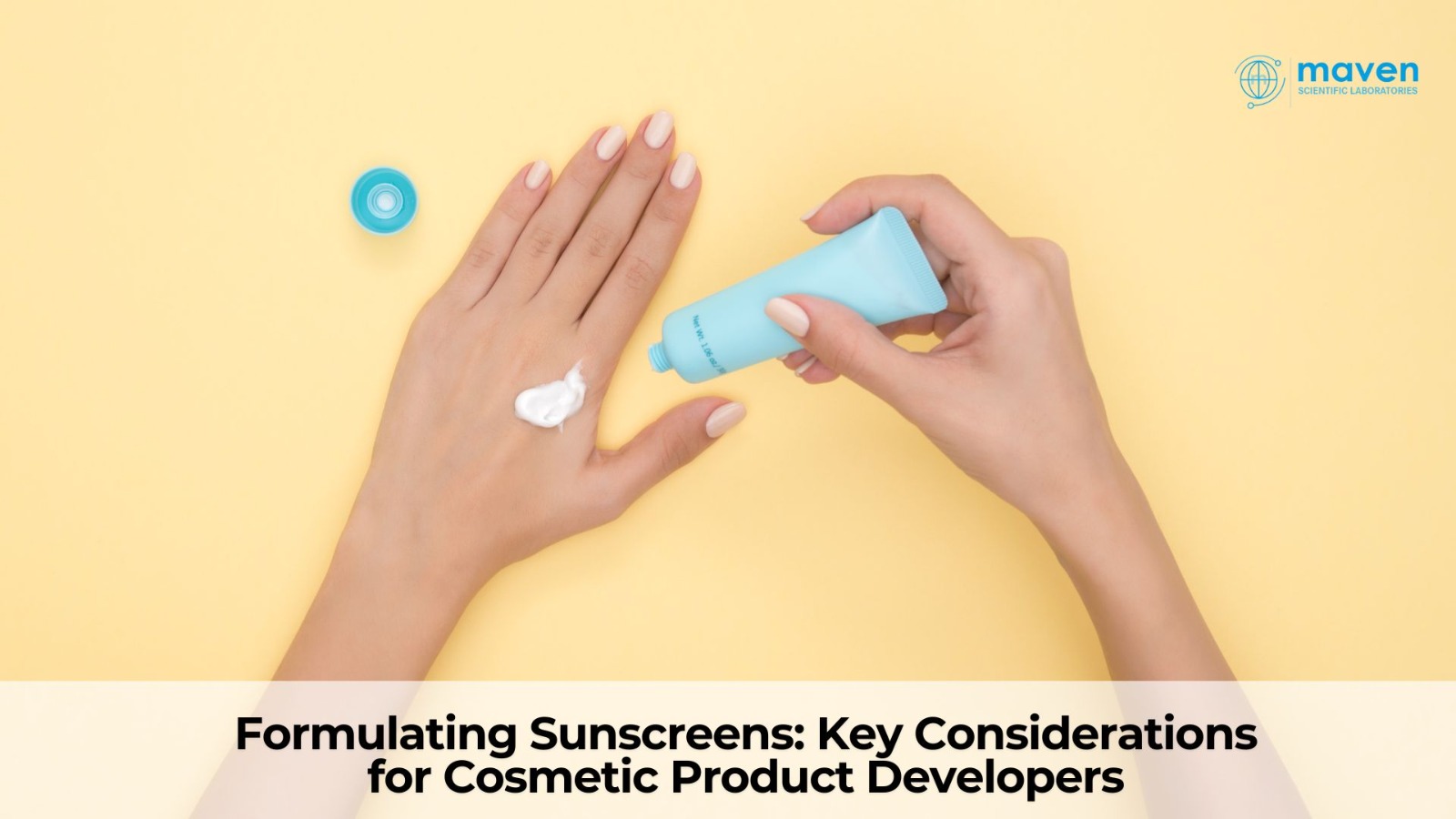
Formulating Sunscreens: Key Considerations For Cosmetic Product Developers
Introduction
Sun Protection Factor (SPF) is a vital element in cosmetic formulations, especially for sunscreens. As consumer awareness about UV protection grows and regulatory bodies enforce stringent guidelines, cosmetic product developers must stay informed about the science behind SPF, formulation requirements, testing protocols, and global regulatory standards. This guide explores the key aspects of SPF formulation and compliance to help cosmetic brands create effective and marketable sunscreen products.
Understanding SPF and Its Importance
SPF measures a sunscreen’s ability to protect the skin from UVB rays, which cause sunburn and contribute to skin cancer. Higher SPF ratings offer more UVB protection but do not indicate UVA protection, which is crucial for preventing premature aging and deeper skin damage. This is why broad-spectrum protection is emphasized in sunscreen formulations.
Key SPF Considerations for Formulators
- SPF Rating: Determines the level of UVB protection.
- Broad-Spectrum Protection: Ensures defense against both UVA and UVB rays.
- Photostability: Ensures the sunscreen remains effective after exposure to sunlight.
- Water Resistance: Crucial for sports and outdoor sunscreens.
- Skin Compatibility: Must be suitable for different skin types, including sensitive skin.
Choosing UV Filters
SPF is achieved by incorporating UV filters, which can be either physical or chemical:
Physical (Mineral) Filters
- Zinc oxide and titanium dioxide provide broad-spectrum protection by reflecting and scattering UV radiation.
Chemical Filters
- Avobenzone, octocrylene, oxybenzone, and homosalate absorb UV radiation and convert it into heat, which is then released from the skin.
Considerations When Selecting UV Filters
- Regulatory Compliance: Not all UV filters are permitted in every region.
- Stability & Compatibility: Some filters degrade under UV exposure.
- Sensory & Aesthetic Appeal: Some filters may leave a white cast or feel greasy.
Formulation Challenges and Stability Testing
Sunscreen formulation is complex due to the interaction of active ingredients. Developers must address:
- Ingredient Compatibility: UV filters must be stable with emulsifiers, oils, and antioxidants.
- Texture & Feel: Consumers prefer lightweight, non-greasy formulas.
- Water and Sweat Resistance: Essential for outdoor and sports applications.
- pH and Stability: Maintaining product effectiveness under different environmental conditions.
SPF Testing Methods
SPF values must be tested to ensure product claims are accurate. Common testing protocols include:
- In Vivo SPF Testing: Human volunteers are exposed to UV radiation to measure erythema (redness) response.
- In Vitro SPF Testing: Measures UV transmittance through sunscreen-applied substrates.
- Water Resistance Testing: Determines SPF retention after water immersion.
- UVA Testing: Broad-spectrum sunscreens undergo additional testing to assess UVA protection.
Regulatory Considerations
Different regions have specific regulations for sunscreen products:
United States (FDA 21 CFR 201.327)
- Sunscreens are regulated as OTC drugs.
- SPF testing and labeling must comply with strict guidelines.
- All sunscreens must include standard "Drug Facts" information.
European Union (EU Regulation 1223/2009)
- Requires in vivo or in vitro SPF testing.
- Mandates UVA protection labeling.
Asia-Pacific (Japan, China, Australia)
- Each country has its own SPF testing requirements and approved UV filters.
Canada (Health Canada Monograph)
- Specifies permitted UV filters and SPF labeling requirements.
Labeling and Claims Compliance
Sunscreen labels must accurately reflect product benefits and comply with regulations:
- SPF Rating: Clearly displayed on packaging.
- Broad-Spectrum Claims: Allowed only if UVA protection is demonstrated.
- Water Resistance Claims: Must specify duration (e.g., 40 or 80 minutes).
- ‘Reef-Safe’ Labeling: Some regions ban oxybenzone and octinoxate to protect marine ecosystems.
Sunscreen Is a Drug? What Does That Mean?
Sunscreens in the United States are regulated as drugs because they claim to prevent sunburn and reduce the risk of skin cancer. This applies to any cosmetic product with an SPF component, such as foundation or lip balm.
Sunscreen products must adhere to FDA safety and efficacy standards and fit within an official monograph. If a product does not meet monograph requirements, it must undergo the New Drug Application (NDA) process for approval.
How Do I Work SPF into My Formulation?
When formulating a sunscreen, developers must:
- Select appropriate UV filters based on regulatory acceptance and efficacy.
- Ensure ingredient compatibility to maintain stability and effectiveness.
- Test formulations rigorously using in vivo and in vitro methods.
- Optimize sensory attributes to enhance consumer appeal.
- Ensure regulatory compliance before marketing the product.
What Kinds of Sunscreen Are There?
Sunscreen is available in various formats, including:
- Lotions – Traditional, widely used format.
- Sprays – Easy application, but requires even distribution.
- Gels – Lightweight and non-greasy.
- Makeup with SPF – Foundations, lip balms, and other cosmetics.
What Are Some Important Rules for Marketing Sunscreen?
The FDA regulations (2011 update) specify that:
- Broad-spectrum sunscreens with SPF 15 or higher may claim to reduce the risk of skin cancer and early aging.
- No sunscreen can claim to be "waterproof" or "sweatproof"—only water-resistant claims (40 or 80 minutes) are allowed.
- Sunscreens cannot claim protection longer than 2 hours without reapplication.
- All sunscreen products must display standardized "Drug Facts" labels.
Why Work with a Regulatory Consultant?
Sunscreen regulations are evolving, and non-compliance can lead to product recalls or legal issues. Consulting with a regulatory expert ensures that:
- SPF claims are backed by valid testing.
- Ingredient choices align with market-specific regulations.
- Labeling and claims meet compliance standards.
Conclusion
Developing an effective sunscreen requires a thorough understanding of SPF formulation, UV filters, stability testing, regulatory compliance, and consumer preferences. By considering these factors, cosmetic product developers can create safe, effective, and marketable sunscreens that meet global standards. Staying updated on regulatory changes and emerging sun protection technologies is key to success in the competitive sunscreen market.
For expert regulatory guidance and formulation support, partnering with a company like Maven ensures seamless compliance and product success.







